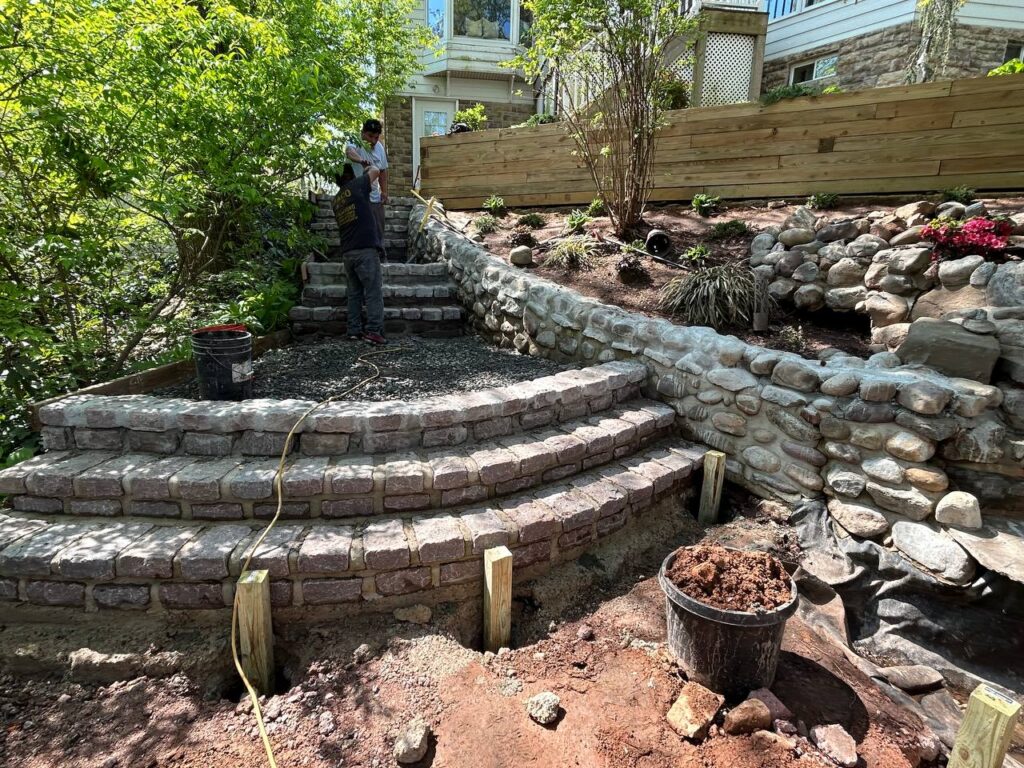Choosing the right retaining wall is crucial for ensuring its longevity and effectiveness in managing soil and enhancing your property’s landscape. Here are five essential tips for selecting durable retaining walls that will stand the test of time:
1. Assess Soil and Drainage Conditions
Understanding the soil and drainage conditions on your property is fundamental to selecting a durable retaining wall:
- Soil Type: Test your soil to determine its type and stability. Different soil types (clay, sandy, loamy) affect the choice of retaining wall material and design.
- Drainage: Proper drainage is critical to prevent water buildup behind the wall, which can lead to pressure and potential failure. Ensure that your wall design includes adequate drainage solutions, such as weep holes or drainage pipes.
2. Choose the Right Material
The material you select for your retaining wall impacts its durability and aesthetic appeal:
- Concrete: Pre-cast concrete blocks or poured concrete walls are highly durable and versatile. They are suitable for various heights and load-bearing requirements.
- Natural Stone: Stone walls offer natural beauty and strength. Materials like granite or limestone are durable but can be more expensive.
- Brick: Brick retaining walls provide a classic look and are strong and durable, but they may require more maintenance over time.
- Timber: Treated timber or railroad ties can be used for a rustic look but may not last as long as other materials. They are more prone to decay and may need replacement sooner.

3. Consider Wall Design and Height
The design and height of your retaining wall influence its stability and effectiveness:
- Design: Choose a design that complements your landscape and meets your functional needs. Options include gravity walls, cantilever walls, and tiered walls.
- Height: Determine the height of the wall based on the slope and soil conditions. Taller walls may require additional reinforcement or specialized designs to ensure stability and prevent failure.
4. Evaluate Professional Installation
Proper installation is key to the longevity and performance of your retaining wall:
- Experienced Contractors: Hire experienced masonry or landscaping contractors who have a proven track record with retaining wall projects. Proper installation ensures that the wall is structurally sound and performs well over time.
- Installation Practices: Ensure that the installation process includes proper site preparation, including excavation, compaction, and the incorporation of drainage systems.
5. Review Maintenance Requirements
Understanding the maintenance needs of your retaining wall helps ensure its long-term durability:
- Maintenance Needs: Different materials and designs have varying maintenance requirements. For example, timber walls may require regular sealing and replacement of rotting wood, while concrete or stone walls typically require less frequent maintenance.
- Inspection and Upkeep: Plan for regular inspections and upkeep to address any issues such as cracks, erosion, or drainage problems. Addressing minor issues promptly can prevent more significant problems down the line.
Selecting a durable retaining wall involves careful consideration of soil conditions, material choices, design, installation practices, and maintenance needs. By following these tips, you can ensure that your retaining wall will enhance your property’s functionality and aesthetics while standing the test of time.

